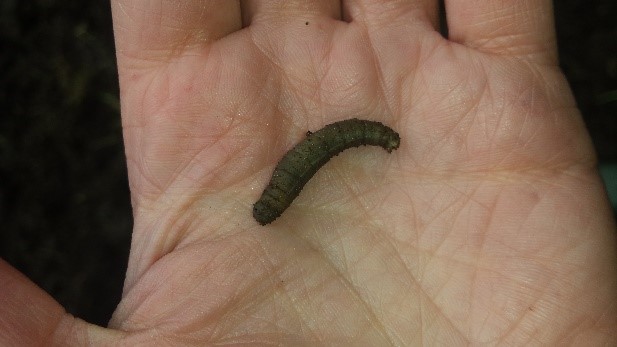Weather conditions in August were ideal for the establishment of new reseeds however, autumn reseeding can face many challenges which are often not experienced in spring.
To overcome these challenges and ensure the best chance of achieving a well-established sward for next spring, follow our recommendations outlined below:
Sowing date
Once we approach late August/early September, weather can become more challenging for the establishment of grass seed. The earlier grass seed is sown the better chance it has of a successful establishment. A well-established sward is also more capable of competing with weeds.
A study conducted by Noel Culleton, examined two sowing dates – early September versus early October. From the results, it is clear that the early September sowing date showed better establishment 6 weeks post-sowing (Table 1), and consequently greater tiller numbers and DM yield the following March.
Table 1. Effect of sowing date on sward establishment (Culleton et al., 1992)
| Sowing Date | ||
| September 3rd | October 4th | |
| Seeds sown / m2 | 1030 | 1030 |
| Seedlings 6 weeks later/ m2 | 760 | 570 |
| Tillers/ m2 March | 7190 | 3110 |
| Kg DM/ha in March | 913 | 478 |
Fertiliser
Ensure the new sward has adequate nutrition – generally 3 bags of 10:10:20 per acre is advised for soil index 3, but check your soil test results and ensure you remain within your Nitrogen (N) and Phosphorous (P) levels in the nitrates. Apply the fertiliser after the seed is sown as adequate P and Potassium (K) is essential for root and tiller development of the new plants. Follow with N approximately 3 weeks after sowing, but ensure it is within your allowances and spread before the 15th September deadline.
Pests
Pests can be problematic with autumn reseeds, so it is important to ensure all steps are taken to give the new reseed every possible chance. Monitor the new reseed for pests and seek advice if you think you have a problem.
Slugs
Slugs are generally identifiable by shredded leaves. They are more likely to be a problem if there is a lot of surface trash, or in direct drilled reseeds where a slit is created in the ground, allowing slugs to travel along.
Whilst slugs are most common in damp fields or along headlands, a well rolled seedbed at sowing time will help reduce the chances of a problem. If you suspect a problem, leave a fertiliser bag in the field overnight, pinned down with a few stones and check the following morning to see if there are slugs underneath. Should a problem exist, apply slug pellets as necessary.
Frit-fly
Frit-fly is generally the most problematic pest in autumn reseeds as they produce three generations a year, with the larvae of the 3rd generation emerging in late summer. The larvae bore into individual grass stems, causing the centre shoot to turn yellow and die.
If there is a problem with frit-fly, it is identifiable by gently pulling the centre shoot, which will come away from the plant easily. There is no chemical option for the control of frit-fly, therefore ploughing or the use of a break crop such as brassicas can help break the cycle.
Leatherjackets
Leatherjackets are the larvae of the crane fly or daddy-longlegs. Damage is characterised by dead plants on the soil surface. Damage is generally observed by yellow or brown patches in the field, and when the soil is dug with a spade, you can generally spot them if they are present (Image 1).
There is no longer chemical control available for these but adequate rolling can help reduce their movement in the soil. It is essential to ensure all steps are taken to give the new reseed the best possible start.
 Image 1: A leatherjacket
Image 1: A leatherjacket
Weed Control
Post-emergence weed control is the most vital and cost effective opportunity you will have for weed control in the new sward. Apply approximately 6 weeks after sowing when weeds are actively growing. Ensure the product label allows use in your timeframe as some new ley sprays are not permitted after the 31st August. Check the label to ensure you are cross compliant and if you have sown clover, use a clover safe spray.
Grazing
Check the label on your post-emergent weed spray to see when the sward can be grazed. This early grazing is critical to help ensure you have a better tillered and denser sward for the following spring.
Often cows will do a better job than calves, as although they are heavier, they will graze quicker and can be removed from the new reseed much sooner. However, it is important to ensure ground conditions are firm enough to allow so.
Ask an expert about reseeding
